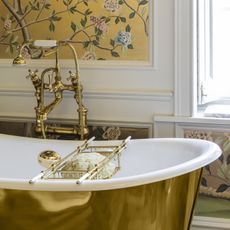The former smugglers' inn that became one of the finest gardens on the south coast
Once the haunt of smugglers and sailors, Lepe House now shelters a garden where pre- and interwar plantings sit happily with impressive new areas.
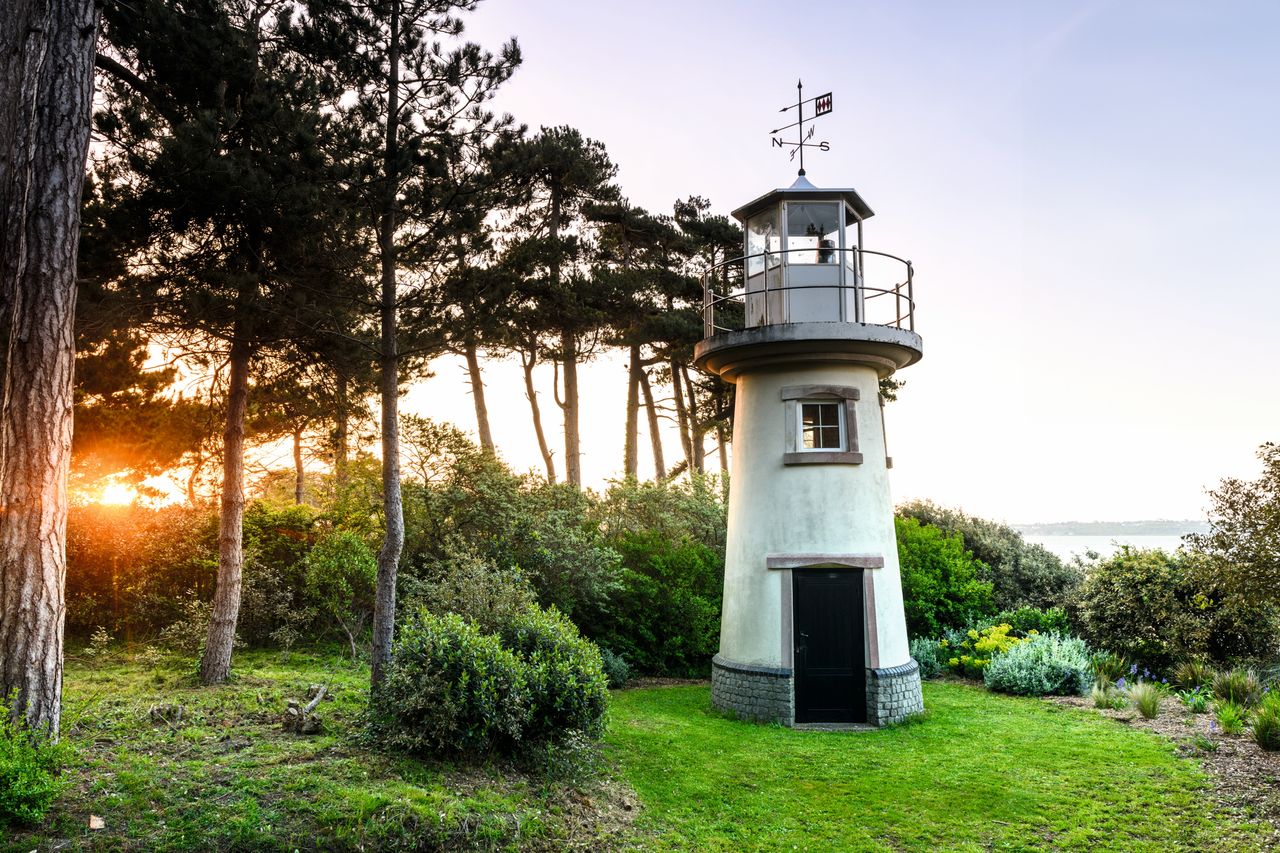
Inside Lepe House hangs a pair of charming portraits of John and Emily Jane Forster (both tending plants), who acquired the Exbury estate — including Lepe — in 1880. They were followed by their son and daughter-in-law, Harry and Rachel Forster, who were largely responsible for the intriguing garden, which they created during the decades before and after the First World War.
Since 1999, Lepe has been managed by their great-granddaughter Emma Page and the work she has carried out to restore and add to the 14-acre garden is a homage to her distinguished predecessors and what they achieved.
Lepe enjoys a spectacular position on the Hampshire coast, facing across the Solent to the Isle of Wight and overlooking the mouth of the Beaulieu River. Its story and that of the garden are inextricably bound up with the two great estates a few miles up the Beaulieu river: Palace House, Beaulieu, and Exbury.
Rachel Forster was the daughter of the 1st Lord Montagu of Beaulieu and Lepe was originally acquired as part of the Exbury estate, forming its south-eastern extremity. The house had once been the Ship Inn, long favoured by smugglers, but, in 1908, the Forsters transformed it into a dower house for Exbury and began creating the garden. Lepe’s position overlooking the beach made both house and garden projects challenging, underpinned by characteristically Edwardian optimism and zest for adventure.
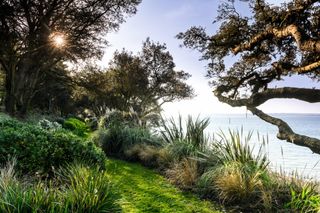
Sadly, the Forsters’ two sons were killed in the First World War, so they sold the Exbury estate to their friend Lionel de Rothschild (who would go on to create the now world-famous garden). However, they retained the Lepe property which became their home. The house was further enlarged and development of the garden continued steadily — even during the five years when Harry Forster, by then 1st Lord Forster following a distinguished political career, served as Governor-General of Australia in 1920–25.
The most ambitious addition of the 1920s was the spectacular rock garden created on the broad slope between the house and the beach. At the same time, the shelter provided by holm oaks and pines, which had been among the Forsters’ earliest planting, allowed for the introduction of more ornamental trees and shrub — notably Exbury hybrid rhododendrons, which Rothschild was breeding with great success and which he was happy to give to his neighbouring friends.
Lord Forster died in 1936 and, in 1943, the house was requisitioned by the Royal Navy and became part of HMS Mastodon. It was one of the bases from which the D-Day landings were planned and executed and was mentioned by the celebrated novelist Nevil Shute in his wartime classic Requiem for a Wren: ‘Lepe House became full of very secretive naval officers… a construction gang began work to make a hard, sloping concrete platform running down to the water where flat-bottomed landing-craft could beach to refuel and let their ramps down to embark the vehicles or tanks.’
Sign up for the Country Life Newsletter
Exquisite houses, the beauty of Nature, and how to get the most from your life, straight to your inbox.
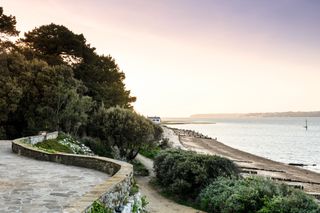
Lepe was returned to the family in 1947 and the Forsters’ daughter, Dorothy, continued to care for the garden until her death in 1983. Since Mrs Page took over the garden, she has come to understand the key qualities of what was created by her great-grandparents and added to by her grandmother, as well as the considerable challenges of the site — a drought pocket between Southampton and Lymington with poor soil and regular battering from salt-laden gales sweeping up the Solent. Yet there are also times when Lepe’s best qualities can be celebrated, with sun-drenched views across calm azure sea to the Isle of Wight and the Needles in the distance.
In the far south-east corner of the garden, the Beaulieu Millennium beacon — which looks like a miniature lighthouse — was put up in 2000. From here, the shore walk takes one through a tunnel of protective holm oaks and pines that leads to the rock garden in front of the house. Along the walk, there are huge clumps of elaeagnus and hebe and a tall screen of griselinia at the far end, all of which clearly thrive in the seaside conditions. Parallel to the shore walk on this side of the house is the columbary walk, which leads to the columbary or dovecote built by the Forsters in 1893. This is shaded by spreading holm oaks and, in spring, the ground on either side is lit up with clumps of bright-pink Cyclamen coum.
The columbary walk forms a protective woodland belt along the large central area of the garden. In the Forsters’ time, this was meadow; more recently, it became the cherry walk garden, celebrating a broad walk between Prunus ‘Tai-haku’, with daffodil meadows on either side. Beyond this are the massed rhododendrons that came from Exbury. Now mature plants, they are as impressive for their patterns of cinnamon branches as for their various flowers. Among them are other equally imposing trees, such as two magnificent Japanese maples and a large Hoheria sexstylosa.
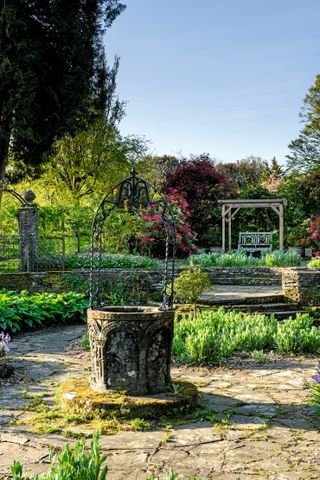
In a style characteristic of the Edwardian and interwar period, the garden balances these more naturally set-out areas with smaller formal, architectural areas, such as the sunken paved garden that sits below the cherry-walk meadow. Bright-pink Lychnis coronaria flowers here in summer, contrasting with the foliage of hostas and purple sage.
From the gates that lead away from the paved garden, the azalea walk with massed Japanese azaleas on both sides continues a hint of formality back towards the house. The division between formal and natural is most clearly introduced by the impressive yew-hedged walk that runs right across the garden, both creating a vista and introducing a firm architectural line between the different areas.
With the expert help of her head gardener, Caspar Todd, Mrs Page is striking the balance between renewal and retention with skill. Mature plants, such as the original Exbury rhododendrons and ‘Tai-haku’ cherries, give a feeling of establishment, as well as telling the garden’s story and providing a background for new planting.

One major recent project has been the clearing and restoration of the rock garden, which had disappeared under self-seeded trees and undergrowth. It has been replanted with sisyrinchium, hypericum, santolina, valerian and Iris sibirica and, soon, will provide the house with the impressive foreground that the Forsters planned.
Across the main drive — built by the navy during the Second World War — an arboretum started by Mrs Page’s grandmother continues to develop with the addition of young paulownia, cercidiphyllum, tulip tree and monkey puzzle. Near the house, the Forsters’ paved sunken garden has been restored and the impressive pergola walk that leads off along the shore side of the walled garden has been cleared ready for replanting.
Inside the walled garden, the borders have been replanted with, for instance, an early summer-flowering combination of knautia, tradescantia, sedums, bearded iris and catmint. One can say with confidence that the Forsters would both recognise their garden and be heartened by the rejuvenation that is taking place.
George Plumptre is CEO of the National Gardens Scheme
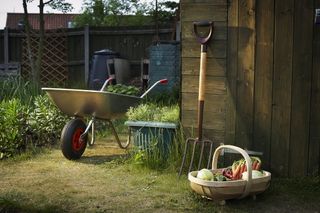
Credit: Mike Harrington via Getty Images
Leave the cellophane-wrapped lettuce at the supermarket. It's time to grow your own
Alan Titchmarsh takes us for a tour around his vegetable garden.

Inside the garden of Eton: A rare glimpse into the grounds of the world's most famous school
The gardens of Eton College in Windsor, Berkshire, date back to a request from its founder, King Henry VI. Over
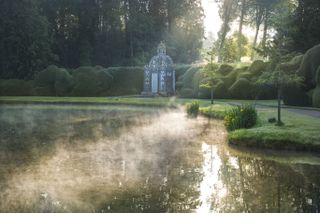
From Derbyshire to Dunrobin to the Dordogne, Andrea Jones's spectacular winning photographs in the RHS Botanical Photography Awards 2024
Garden photographer Andrea Jones is among the winners at the RHS Botanical Photography Awards, on show at the Saatchi Gallery.
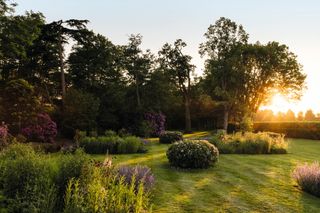
The garden at Emmetts Mill, Chobham: Bourne to run
A flat waterside site has been transformed into a garden full of drama with plenty of delightful places to stop

